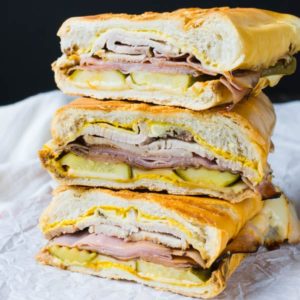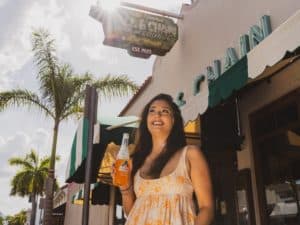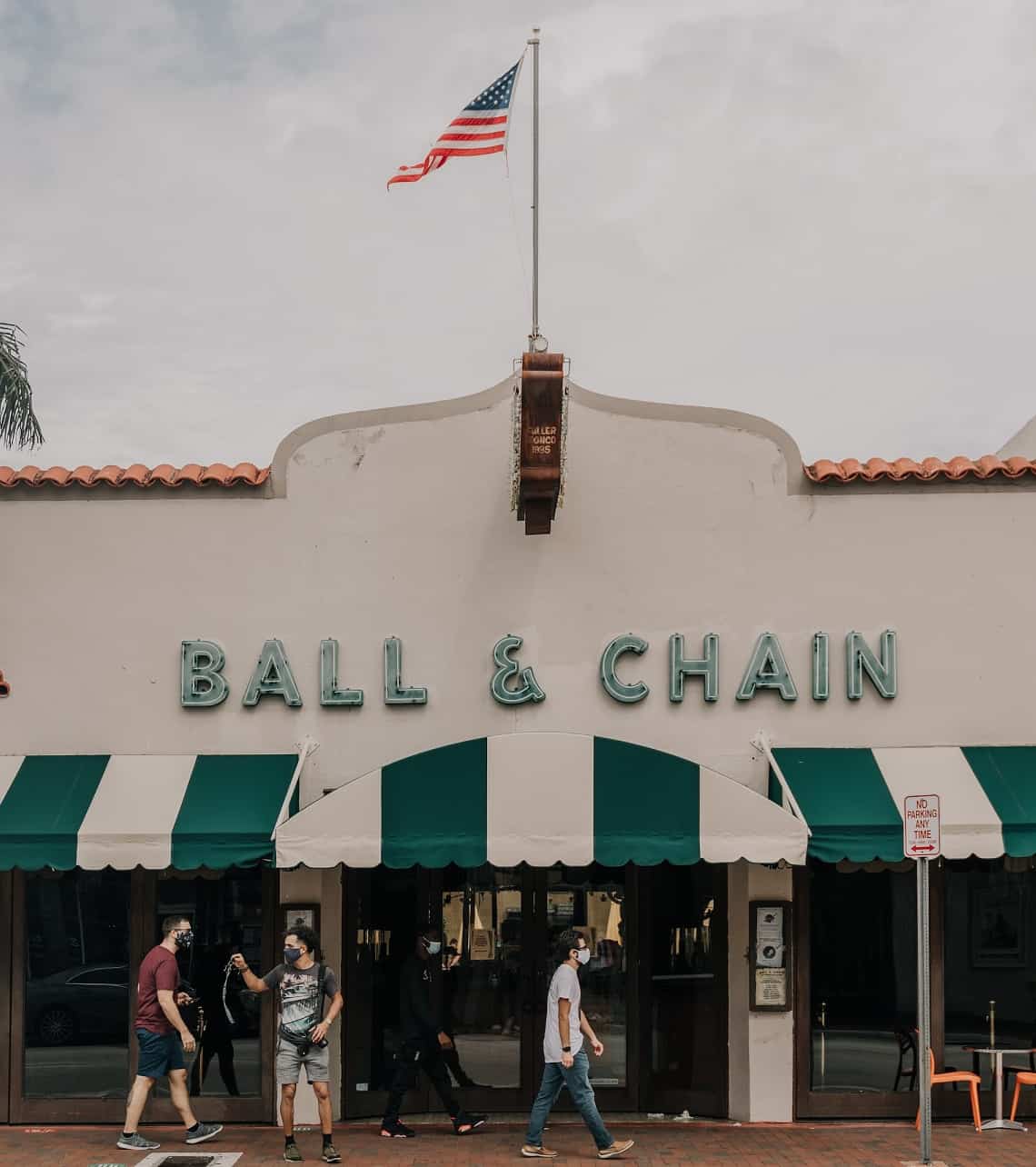Echoes of rumba music, the musky aroma of Cuban cigars, and a vibrant carousel of tropical colors – welcome to Little Havana, Miami. Just as music city’s Nashville Secret Food Tours take you on a sensory tour of Music City, our Little Havana Food Tour immerses you in the heart of Miami’s Cuban heritage. An enclave brimming with rich history and culture, Little Havana is the vibrant epicenter of the Cuban diaspora.
Little Havana is undoubtedly a great cultural treasure in Miami. Stories you can’t even imagine intersect on these bustling streets filled with Latin poetry. Chickens are also part of the landscape… Little Havana is for sure a place you need to experience.

As our guests traverse through this historical neighborhood, they not only savor sumptuous Cuban delicacies but also imbibe the colorful Latino culture that has shaped this part of Miami. With that said, let’s take a gastronomical journey to note the history and characteristics of some intriguing food offerings from our very own Little Havana Food Tour.
Before we dive into the four iconic bites on this tour, let us first explore how Cuban cuisine developed its distinct personality. A delicious product of indigenous, Spanish, African, and Caribbean culinary influences, Cuban food relies heavily on fresh ingredients and simple yet flavorful preparation methods.
From Guava Groves to Your Plate: The Journey of Pastelitos de Guayaba
Crispy, sweet, and filled with guava paste and cream cheese, Pastelitos de Guayaba are as Cuban as can be. They reflect both the simplicity and ingenuity of Cuban cuisine. Pastelitos, which translates to “little pies” began as a way for Cubans to make use of the tropical fruits growing abundant in their backyards. What started as a humble household sweet quickly gained popularity and found its way to bakeries across Cuba and, thanks to the Cuban diaspora, across the globe.
Today, this pastry gets love worldwide for its delicate, flaky crust and irresistible guava filling. The process of making Pastelitos is fairly straightforward yet it calls for skill. Each layer of dough gets lightly brushed with butter and then baked till golden brown. Simultaneously, sweet, tangy guava pulp is stirred on heat till it thickens into a luscious jam. The pastries are then filled, baked till they puff up, and voilà! Your Pastelito de Guayaba is ready.
Apart from guava, you can find many other variations of Pastelitos. Be it the flavorful meat or chicken fillings or Pastelitos filled with tropical fruits like pineapple and coconut, the Cuban culinary scene has something for every palate. As you take a bite of these sweet or savory Pastelitos, you will instantly feel connected to the Cuban roots of Little Havana.
The Cuban Sandwich: A Taste of Fusion yet Truly Cuban

Next on our Little Havana Food Tour is an awe-inspiring blend of flavors – The Cuban sandwich. Interestingly, the Cuban sandwich as we know it today, was indeed, not born in Cuba but in Florida, among the early Cuban immigrant communities. It was their answer to a quick, nourishing, and affordable meal.
The Cuban sandwich is a beautiful amalgamation of ham, roasted pork, Swiss cheese, pickles, and mustard, stacked between slices of Cuban bread. The assemblage is then grilled to a crispy, gooey perfection. While the traditional recipe remains a classic, several variations have sprung up around the globe depending on regional preferences.
The Medianoche is another popular variation of the Cuban sandwich. Named after its hour of consumption (midnight), this scrumptious delight differs from the traditional Cuban sandwich by sporting a rich, dark bread and slightly sweeter taste. Best enjoyed after a long night of dancing to Cuban rhythms, both Cuban locals and tourists line up at street food stands to get their fill of this indulgent sandwich.
Croqueta de Jamon: Bite-sized Pieces of Pure Love
Time to talk about a Cuban snack that’s loved by everyone from grandmas to young moppets – the Croqueta de Jamon. Dating back to the Medieval ages of Spain, croquettes were introduced to Cuba through Spain’s colonization. Gradually, the simple potato and béchamel croquettes absorbed local flavors and evolved into something uniquely Cuban – Croqueta de Jamon.
Making Croquetas calls for simple ingredients and a lot of love. Ham is finely chopped and mixed with béchamel sauce. The resulting mixture is then rolled into cylinders, breaded and deep fried until golden brown. The result is an unassuming treat that packs some serious flavors. Much like the Cuban sandwich, this delicacy has seen several variations over time, like the Croqueta de Pollo (chicken) and Croqueta de Bacalao (cod).
These bite-sized delights have had an immense impact on Latin American culinary scenes, with each region adding its special touch. Nowadays, Miami has placed its own spin on these Croquetas, featuring a wide range of fillings like fish, seafood, vegetables, and even boutique flavors like truffles.
Ropa Vieja: A Timeless Cuban Emblem
Last but certainly not least on our Little Havana Food Tour is Ropa Vieja. This robust stew is a testament to the vibrant culture and hearty spirit of Cubans. Translated as “Old Clothes,” this dish reflects the resourcefulness of the Cuban people.
Ropa Vieja begins with a humble piece of flank steak braised for hours in a hearty sauce of tomatoes, onions, peppers, and wine. As the meat simmers, it breaks down into long, tender pieces that resemble tattered rags, hence the name. The stew is traditionally served with rice, beans, and fried plantains, making it a fulfilling, balanced meal. The aromatic Ropa Vieja mirrors the multi-ethnic influence on Cuban cuisine.
Whether it’s due to the historic Sephardic Jewish influence in Cuba or the hunger for experimentation, Ropa Vieja has evolved far beyond the classic, tomato-based stew. You can now find variations that feature seafood, chicken, or even completely vegetarian options, each carrying their distinct appeal. As you sample different versions of Ropa Vieja, you can truly appreciate the adaptability and resourcefulness of Cuban cuisine.
In conclusion…

Our culinary escapade through Little Havana serves as a vibrant reminder of how food is an extension of history, culture, and shared experiences. Each bite transports us back in time, letting us experience Miami’s Cuban heritage in full swing. Whether it’s the Pastelitos de Guayaba, the Cuban Sandwich, the Croqueta de Jamon, or the Ropa Vieja, each tells a narrative that is unique yet unified in its story of Cuba.
And for a customized Miami experience, explore our Private Tour in Miami South Beach. Tailored just for you!
